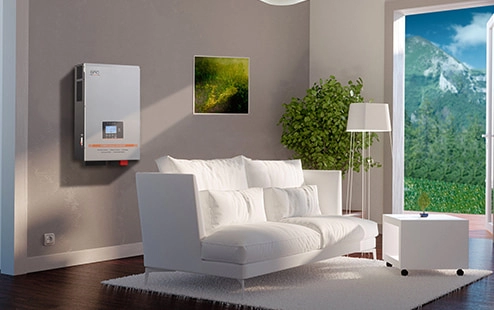In a string inverter setup, the panels are connected in series, so that one underperforming panel — a shaded, dirty, or busted panel, for example — can pull down the performance of the entire string. For instance, if one panel in a long string of panels gets shaded by a tree or a building then the output of the entire string of panels drops to the level of the weakest panel.
Microinverters use them on each separate panel. That means that all of the panels function individually, so if one underperforms, the other panels are unaffected. The fixed solar panel system works by attaching each solar panel to a fixed solar panel rack and optimizing the energy production of each panel with the use of a microinverter. Such optimization at the panel level results in superior overall system efficiency and higher energy production, particularly under less than ideal situations like partial shades or dust accumulation.

One of the most common difficulties related to solar energy systems is shading. Shading can greatly reduce a solar system’s performance, whether from trees, buildings or other obstructions. Just shaded one solar panel you got significant loss of the energy production of the whole systems with a conventional string inverter.
But microinverters are designed to avoid this problem. Because each panel operates individually, shading on one panel does not interfere with others. So if only one of the panels is shaded, its microinverter will keep trying to extract as much of that power as possible, but the other panels will still be putting out maximum power, given that their efficiency will not be affected by the other shaded panel. This capacity to effectively generate energy in shaded environments translates to more consistent and reliable performance wherever your home might see partial shading at any hour of the day.
Microinverters can also greatly increase the overall reliability of the solar system. In the traditional string inverters configuration, when either of the central inverter or one panel loses, the overall system performance is degraded. If one panel goes wrong the whole string of panels can fail, resulting in reduced system output. Moreover, should the string inverter fail, the entire system becomes inoperable until it is repaired.
If you use microinverters, each panel is a separate entity. If a single microinverter breaks, only the corresponding panel’s performance is affected, with the remainder of the system producing energy without risk of downtime. This redundancy means that your solar system will continue operating even if a particular microinverter is broken. Microinverters are components that can contribute to the overall reliability of the system and prevent a complete system failure if one inverter fails — making them distributed in nature.
One of the biggest advantages of microinverters comes in the monitoring and maintenance area. String inverters are traditionally system-wide, so it’s hard to tell which specific panel isn’t pulling its weight. In the event of a problem, you would possibly want to check all the panels in query to discover the options.
This is incorrect as microinverters allow for individual panel monitoring (you can track panels individually). Most microinverter systems include online monitoring platforms that enable you to see the output of each panel in real time using a smartphone app or web portal. This makes it much easier to see if any panels are underperforming and to quickly take any necessary action — whether it’s due to dirt, shading or a malfunctioning microinverter.
You will be able to take necessary actions beforehand and keep your system healthy with this kind of monitoring. In the event a panel is misbehaving, you can quickly determine if the problem lies with the microinverter or the panel itself facilitating quick troubleshooting and repairs.
In general, microinverters will last longer than traditional string inverters. Most string inverters have a lifespan of about 10 to 15 years, while microinverters are good for about 20 to 25 years, about how long many solar panels themselves will last. And this means that microinverters tend to require less frequent replacements and, therefore, lower maintenance costs than central inverters in the long run.
Because microinverters are something you set under each one of your panels, this means less wear and tear overall on the system. With reduced exposure to sustaining environmental stress and fewer connections in need of monitoring and repair, microinverters are more reliable and require less frequent repair. These factors make for a lower total lifetime cost and, as a result, have a better overall return on investment (ROI) in your solar system.
Better Low-Light Efficiency: Microinverters can often perform better in low-light conditions (e.g., early morning, late afternoon, or cloudy days) compared to string inverters. This is because each panel operates independently, allowing for more efficient energy conversion even when sunlight levels are low.
Safety Regulations: Many regions have rapid shutdown requirements for solar installations to ensure safety during emergencies or maintenance. Microinverters inherently comply with these regulations since they automatically shut down the DC power at the panel level when the AC power is turned off.
Solar microinverters offer significant advantages in terms of energy production, reliability, and safety. By optimizing the performance of each individual panel, reducing the impact of shading and mismatch, and providing detailed monitoring capabilities, microinverters can enhance the overall efficiency and longevity of a solar PV system. While they may have a higher upfront cost compared to string inverters, the long-term benefits often outweigh the initial investment, especially in installations where shading, panel orientation, or future expansion are concerns.